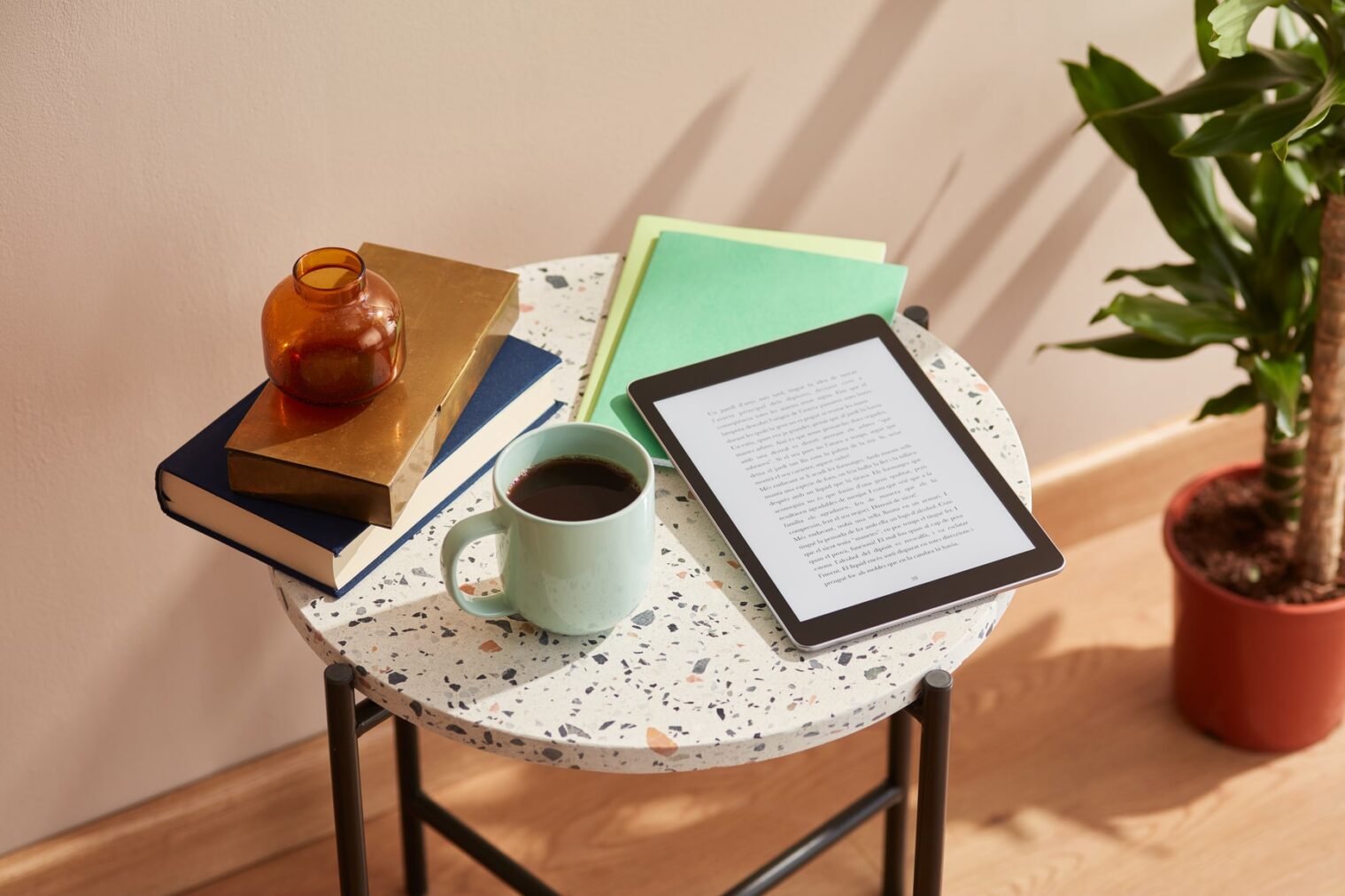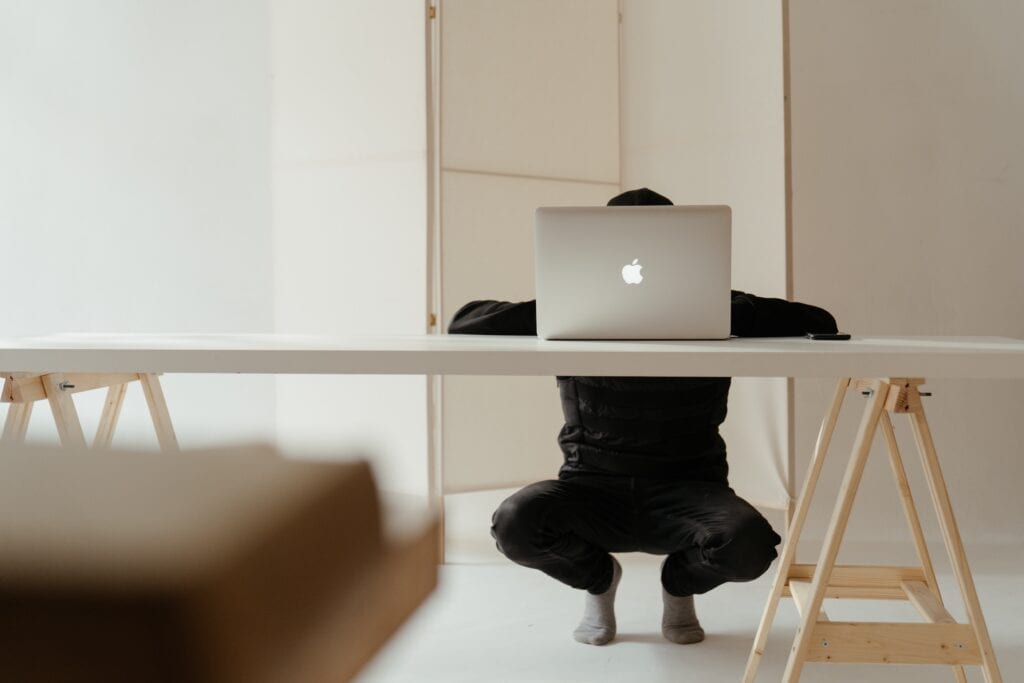
Mindful Working: 5 tips to fight stress in the office and in your home office
There’s often a lot of pressure in the office, where stress is dripping from the ceiling. Such an environment can quickly make us irritable and feel threatened. Most of us know how this ends: passive aggression towards colleagues or the boss, and tension in the air.
Almost nine out of ten Germans feel stressed about their work. In Berlin, every second person feels at risk of having burnout. More than half of all employees suffer from back pain, persistent fatigue, anxiety, listlessness, or insomnia from time to time.
Home office has also brought new challenges. According to a LinkedIn study, for example, around 80 percent of Germans work more than usual when in home office during Corona – around 30 percent (almost a third!) say they do four or more extra hours a day. Every fifth person feels even more time and performance pressure. A quarter state that they struggle to concentrate on their work due to media exposure in the home office.

Numerous studies and research prove that the concept of mindfulness can help counteract these tendencies. At the University of Gießen, for example, they have found out that meditation changes the “default mode”. It is the state our brain enters when we do not have a consciously controlled task to perform. These are the moments when your mind gets lost in a spiral of thoughts, actively brooding, and thereby consuming even more glucose than during other brain activities.
Mindfulness can help us push the pause button on these very subconscious processes instead of getting caught up in our racing thoughts and going on a frantic ride.
People who practise mindfulness regularly can even stop the flow of thoughts altogether. What good does this do you? You can consciously use the moments when you have “nothing to do” to recharge your batteries and rest internally.
In this article, we’ve gathered five tips that will help you practise mindfulness, especially in the home office and at work. Soon you will be able to switch to “relaxation mode” more often and just let your thoughts and feelings go.
Tip #1: Eat your lunch mindfully instead of wolfing it down
Take a moment to think about how mindful you normally are when eating – whether it’s breakfast, lunch, or dinner.
Now you may be asking yourself: What does “mindful eating” even mean? Here goes: make your meal the main attraction and don’t get distracted – not even by your own thoughts. Sounds easier than it actually is.
Mindful eating is about awareness of yourself and your food. You can start practising when you have your next meal using the following questions:
- Why am I eating right now? Am I really hungry or just peckish? How does the hunger feel in my body?
- Do I eat what I feel like or do I restrict certain things and why?
- What does my food look like? What does it taste like and what consistency does it have?
- How do I know that I am full? How does that feel in my body?
- Where do my thoughts and feelings go when I am eating? Am I distracting myself?
You will notice that this short series of questions alone can be challenging. This is because we are usually on autopilot when we eat, so much so that it can be a difficult exercise to become mindful of it.

Tip #2: After-work walk instead of lying on the couch
Let’s face it, technology has made us lazy. In the past, we walked to the letterbox, today we check our e-mails and instead of strolling to the supermarket, we get online deliveries to our doorstep.
Studies show that 40 percent of people no longer go on walks at all – and this trend is on the rise. What a shame! Walking is one of the nicest and easiest ways to improve your mental and physical health.
A Harvard study has shown that people who walk regularly have a 23 percent lower mortality rate than those who don’t.
Especially in times of home office and isolation, walks are a real blessing. You could go explore the neighbourhood with all your senses during your lunch break, or just walk around the block after you finish work.
You will notice that it clears your mind and releases tension. Or how about taking one of your meetings for a walk? Your colleagues will be happy to see you out in the fresh air.
You can ask yourself the following questions to practice mindfulness during a walk:
- Are there new things I can discover that I haven’t seen before?
- What birds are there in the trees?
- What does the air smell like?
- How does it feel in my body?
- Where do I sense tension?
- How fast am I walking and why?
Tip #3: Honest communication instead of passive aggression
We all know how it feels when the air in the office is a bit tense. Almost any team member can sense this kind of tension in a meeting – even online. Why is this happening? Because it’s often much easier for us to criticise the other person instead of talking about our own feelings and experiences – without making ourselves vulnerable, which we are unconsciously trying to avoid.

Communicating mindfully means turning inwards instead of jumping down the other person’s throat. You can do this by consciously observing your body in crisis situations and asking yourself the following questions:
- In which part of the body can you feel the tension?
- How does it feel?
- Do you turn inwards during the conversation or focus on the person you are talking to?
- Why do you want to say what you want to say?
In that fraction of time, when you turn your attention away from the other and towards yourself, you create space between yourself and your feelings. This will help you formulate more “I” messages instead of “you” messages. Automatically, your urge to want to snap at the person decreases and you are better able to express your own feelings.
Tip #4: Take a break instead of overwhelming yourself
You’ve probably had your lunch at your desk and shovelled it down while writing an e-mail or preparing a presentation because of all the deadlines. Especially when working from home, it’s easy to use the lunch break to go to the post office, do your shopping, or watch a series.
The problem with this is: the body and mind do not get the rest they need and deserve, and stress hormones remain elevated. All this results in us not returning to our desks rested after our lunch break. The result: procrastination, higher stress levels, and pressure. If you want to bring more mindfulness into your life, start by allowing breaks to be breaks.
This means, above all, disconnecting from your screen during your lunch break and putting work-related issues aside for the entire break. You can use the time-out to do something that allows you to de-stress and release the tension. For example, eat your lunch mindfully, go for a walk, or dance around your living room for a while – the possibilities are endless.
You’ll also find many ideas to help you make the most of your lunch break in the Humanoo app – from mindful meditation to yoga sessions and challenging workouts.

Tip #5: Conscious reactions instead of autopilot
We have all overreacted at some point when we felt provoked. In those cases, everything happens so quickly, we rarely have time to think about our reaction – we only want to defend ourselves.
In retrospect, we are annoyed by what we said and regret our reactions. Often, we wish we had a different reaction, a calmer one. You must be asking yourself: But how do you do it?
Well, it always helps to pause for a moment, take a breath, and observe the feeling that arises. It sounds trivial, but that short pause is incredibly valuable.
In fact, it creates something incredibly special: distance between yourself and the feeling. This distance will enable you not to identify and internalise the feeling, but to consciously take a step back.
You will notice that this distance between yourself and your feeling grows greater and greater as you practice conscious and mindful communication. This means that emotions are no longer ticking time bombs and reactions gradually became more independent.
Beginnings are hard: be patient with yourself and hang in there
Beginnings are hard and if you haven’t done much else on the subject of mindfulness, it will take a bit of practice and even more effort at first.
Mindfulness is reflected in every moment of your life; therefore, every new situation is also a new invitation to go and practice again and again.
In our Humanoo app you will find programmes and trainings on mindfulness to familiarise yourself with the concept step by step. In this way, it will gradually start to feel easier to be more mindful even in the less mindful moments of everyday life, and not to switch to autopilot.
For it is the seemingly small decisions in life that will assist you in becoming a mindful, fulfilled being. How often do you choose to sit with your feelings and thoughts instead of looking at your phone? How carefully do you listen to your body? How often do you let yourself have some “me-time”?
The good news is: You can do it – and so can everyone else. Soon you will notice the first benefits and your body and mind will celebrate these with you.
We look forward to accompanying you on your journey,
Your Humanoo Team